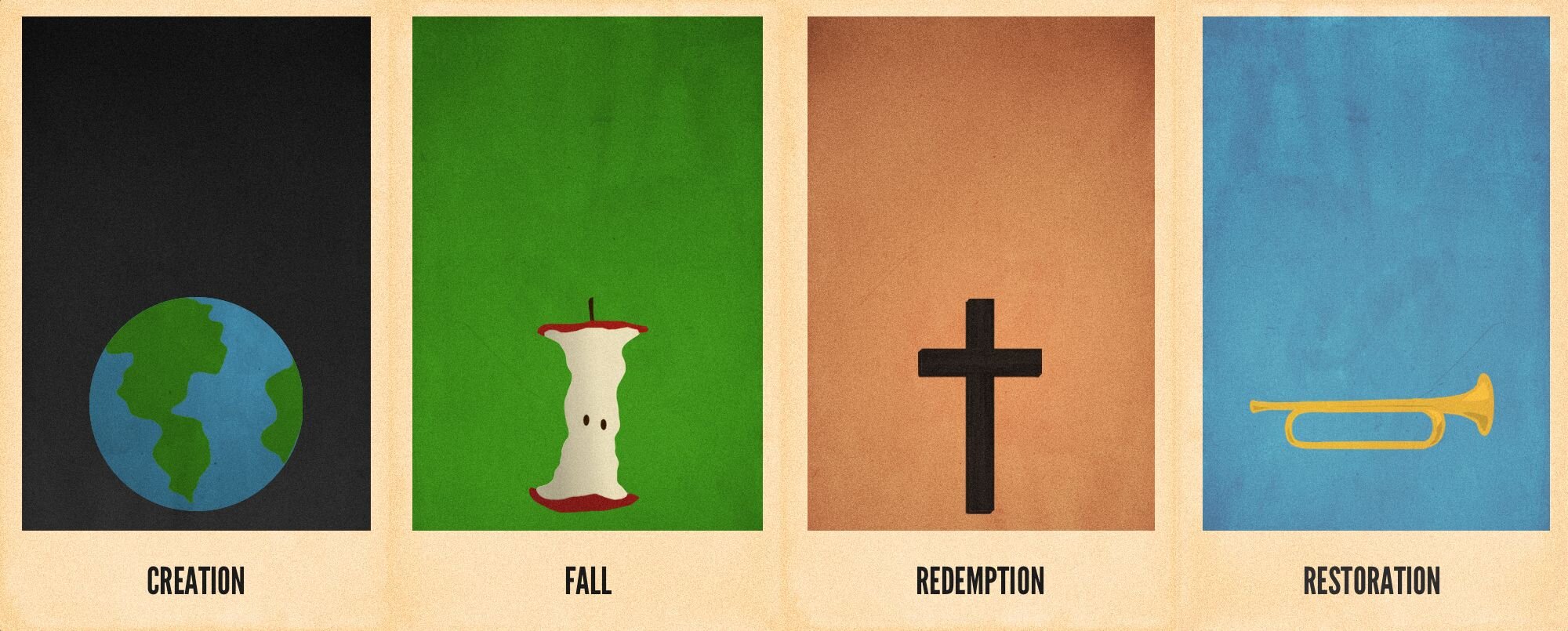The Song Beneath the Stories Part One
Our Fall Learning Cohort is a six-week exploration of the overarching theme of all of Scripture: The Gospel of Jesus Christ!
We’re offering the cohort in two ways:
In-Person, Sundays at 9am
Online via Facebook Live, Wednesdays at 7pm. These will be taught live, but will remain available for streaming afterward.
We’ll be posting the hand-outs for the sessions here on the blog, starting with this one: The Song Beneath the Stories Part One.
For a downloadable PDF version, click here.
The Song Beneath the Stories
There’s a problem with how many Christians read Scripture. We tend to approach the Bible as a collection of individual stories—each with a moral or life lesson to teach us how to be good people.
Infographic by Scott Roberts
That’s not how Scripture presents itself at all. Scripture is more like an orchestra: each book having its own part to play in one grand symphony. That symphony is the Gospel: the good news that through the life, death, and resurrection of Jesus Christ, God has brought forgiveness, transformation, and hope to a world marred by sin.
The first five books of the Bible (Genesis, Exodus, Leviticus, Numbers, and Deuteronomy) are like the percussion, setting the rhythm for everything else.
The Prophets (Isaiah, Jeremiah, etc.) are trumpets, proclaiming God’s truth.
Psalms are violins and strings, expressing “an anatomy of all parts of the soul.”
Historical books (1 & 2 Samuel, the Gospels, Acts, etc.) are the trombones, pushing the melody along.
Epistles (the letters of Paul, John, Peter, etc.) are woodwinds.
Each of these sections plays different parts that match to one another and combine to make a better whole. If you take one out, the whole is much less rich and each section is lesser for it. But if we listen to them together, we can hear how God’s grace is brought into our world in glorious, unexpected, and sometimes even frustrating ways.
The Movements/Acts of Scripture
It may be helpful to think of this symphony as having four different movements, or Acts: Creation, Fall, Redemption, and Restoration. The good creation of God, ruined by the fall into sin, is redeemed by Jesus and restored to become the kingdom of God.
These four movements broadly address 4 basic questions that all religions and philosophies seek to answer.
Where did everything come from?
What is wrong with our world?
How can what is wrong be made right?
Where is everything going?
In Creation, we see God’s wisdom in making all things and his delight in them. As Genesis 1.31 puts it: “God saw all that he had made, and it was very good.” In Fall, we see that things are not the way they’re supposed to be. God’s good creation is marred by sin and its effects. In Redemption, we see that God did not abandon his creation, yet has worked—beginning with Abraham and finding fulfillment in Jesus Christ—to redeem his creation and reconcile it to him. In Restoration, we see how God applies this redemption—As Jesus says in Revelation 21.5, “I am making everything new!”
These four movements make up the symphony. This symphony isn’t one we just listen to. This is our song as well. Coming to Jesus by faith means finding our voices in the song, taking our cues from Scripture in learning to sing. Creation/Fall/Redemption/Restoration isn’t just a key to understanding how Scripture fits together, it’s a key to understanding ourselves and our world as well. In other words, the symphony of Scripture is an invitation for us to find our story in God’s story.
Questions for Reflection
What are some of the ways you have heard Scripture described?
What could it mean for you to find your story in God’s story?


